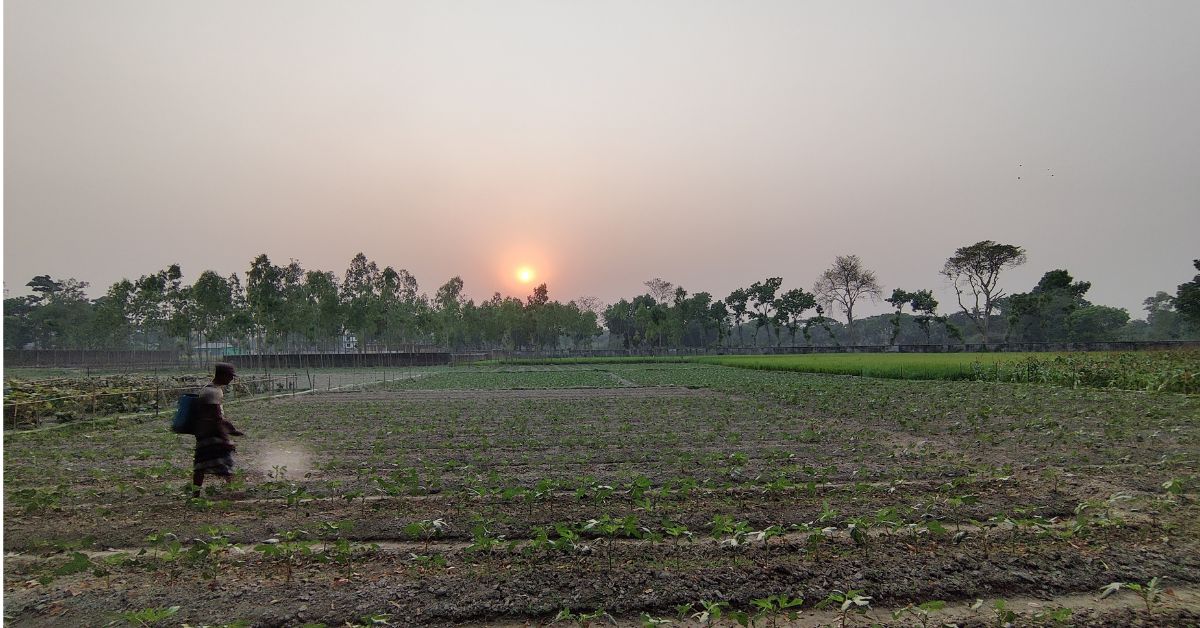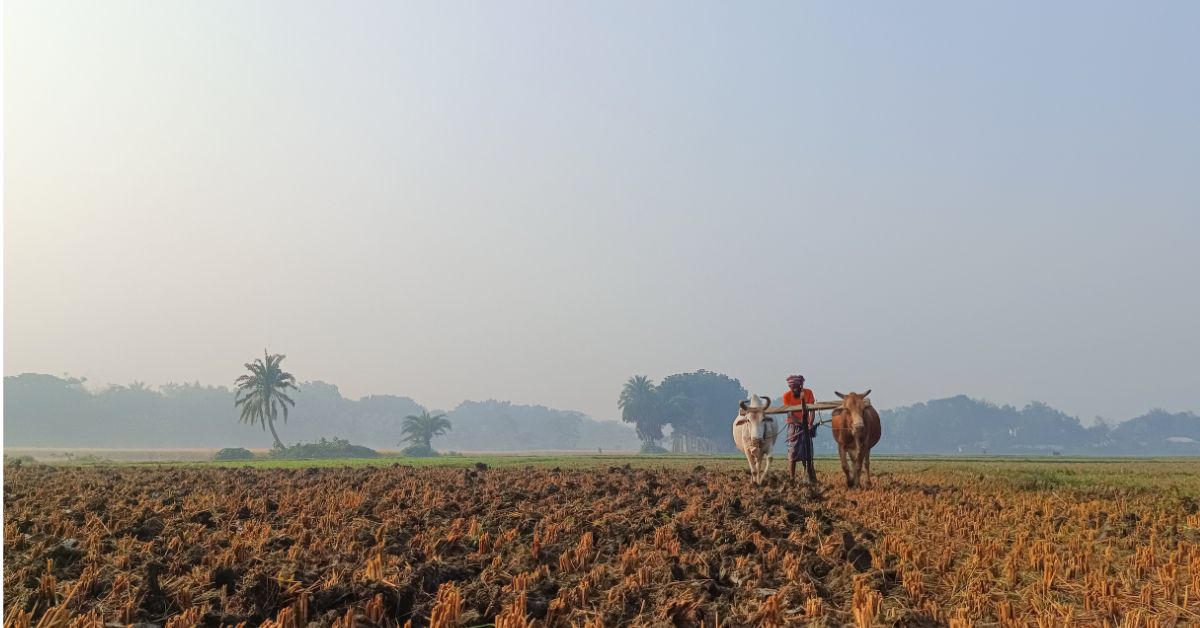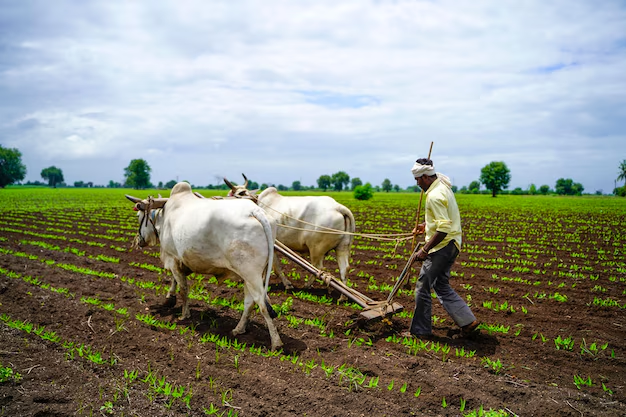55% of India’s Farms Wait for Rain: What a Late Monsoon Means in 2025
This year, the monsoon has arrived late in several parts of India, and for farmers, that changes everything. When the rains are delayed, it’s not just the soil that waits; its entire villages, families, and seasons that are put on hold.
Across central and eastern states, farmers are adjusting to the unexpected pause. According to the Hindustan Times, sowing is falling behind the usual pace. In Maharashtra, only about 69% of last year’s sowing area has been covered so far. In Bihar and Jharkhand, where more than half the population depends on rain-fed farming, sowing is currently at just 55–60%.
For these farmers, a late monsoon isn’t just a shift on the calendar; it means deciding whether to wait for more rain, choose different seeds, or prepare to plant shorter-duration crops that can still make the most of the season.
Yet, the work continues. Farmers are listening to weather updates, sharing advice, and staying ready. They know the rains will come; it’s just a matter of when. And when they do, the fields will welcome them, and the season will find its rhythm again.
Fields waiting for the rain
On a typical June morning in the Beed district, the sun beats down hard on the cracked and dry soil, awaiting rain that hasn’t come. The situation has left many farmers in limbo, hesitant to plant and watching the sky more than the field.
 For these farmers, a late monsoon isn’t just a shift on the calendar; it means deciding whether to wait for more rain. Picture source: Shutterstock
For these farmers, a late monsoon isn’t just a shift on the calendar; it means deciding whether to wait for more rain. Picture source: Shutterstock
Parmeshwar Thorat, an avocado farmer from Beed, explains how difficult this season has already been. “We were prepared to begin sowing in early June, but the rains just didn’t arrive. Every day of delay puts more stress on the plants and on us,” he says.
“If it doesn’t rain on time, I have to postpone everything, from fertilising to irrigation. The delay messes with the flowering cycle, and that means lower yields,” he adds. “It’s not just about one crop; it affects the income for the entire year.”
Without consistent rainfall, the soil’s moisture levels remain too low for seeds to sprout effectively. Even if the seeds are planted, the lack of early moisture makes crops vulnerable to poor growth, disease, and pest infestation.
What Delayed Monsoons Really Mean for Farmers
1. The Planting Season Gets Thrown Off Track
The monsoon is the backbone of India’s agricultural calendar. Farmers plan their sowing schedules based on when the rains typically arrive. When the monsoon is delayed, it leaves fields dry, seeds unsown, and farming plans in limbo.
According to the Hindustan Times, key crops like rice, maize, and soybeans are currently behind by 30–45% compared to last year. This isn’t just a minor delay; it’s a significant gap that can lead to smaller harvests or even failed crops if planting windows close too soon.
 Farmers sowing wheat by hand.
Farmers sowing wheat by hand.
Late sowing means less time for crops to grow, which can:
- Lower yields
- Increase the risk of crop failure
- Shrink household incomes
2. Farmers delay critical purchases
In regions like Bihar and Jharkhand, where small and marginal farmers rely almost entirely on monsoon rains, farmers are now hesitant to buy fertilisers and pesticides. With no guarantee of timely rain, they are postponing these purchases to avoid wasting money on inputs they might never get to use.
This is a risky wait. If the rain comes late but suddenly, they will have very little time to plant and may not have the materials ready. But if the rain doesn’t come soon, they risk losing the entire season.
3. Farm labourers lose work
Agriculture is not just about the farmers—it supports millions of daily-wage workers who depend on farm jobs for their income. When sowing is delayed, there is less fieldwork to offer, and these labourers quickly begin to lose their daily earnings.
 In regions like Bihar and Jharkhand, small and marginal farmers rely almost entirely on monsoon. Picture source: Shutterstock
In regions like Bihar and Jharkhand, small and marginal farmers rely almost entirely on monsoon. Picture source: Shutterstock
The impact can spread quickly across rural communities:
- Labourers may migrate early in search of other work
- Families may have to cut back on essentials
- Local rural shops and markets also feel the slowdown
As the report rightly says, “Monsoon doesn’t just water the fields; it oils the entire rural economy.”
When the rains slow, the entire system slows with it.
How farmers are coping
Even though the situation is challenging, farmers like Parmeshwar Thorat are taking matters into their own hands.
 The monsoon is the backbone of India’s agricultural calendar.
The monsoon is the backbone of India’s agricultural calendar.
“I’ve set up a basic storage tank that collects the little rain we do get, and I’ve also installed drip irrigation to ensure not a drop is wasted,” Thorat explains.
His strategy is simple but effective:
- Water storage tanks help collect and save even the smallest rainfall.Less than 20% of India’s farmland is currently supported by micro-irrigation or water-harvesting infrastructure, making farmer-led solutions like Parmeshwar Thorat’s rainwater tanks critically important.
- Drip irrigation systems make sure water goes directly to plant roots without waste.
Across India, many farmers are also:
- Digging micro-wells and recharge pits to capture early rainfall.
- Switching to direct seed drilling, which is a faster planting method that saves labour and time when the planting season is shortened.
These small but smart adjustments are giving farmers a better chance to make the most of what little time and water they may have this season.
Why this affects all of us
Over 58% of India’s population relies on agriculture for their livelihood. Delays in the monsoon can disrupt rural earnings and local economies. What happens in the fields doesn’t stay there.In past monsoon-deficit years, India has seen food inflation spike by up to 10–12% for essential commodities like pulses, vegetables, and oilseeds.
When sowing falls behind:
- Harvests can shrink.
- Food supply can tighten.
- Prices in the market can go up.
This can lead to food inflation, supply chain disruptions, and even shortages of common staples. The ripple effect reaches grocery shops, wholesale markets, and, ultimately, everyone’s kitchen tables.
But beyond prices, the stability of rural communities is also at risk. When farming seasons falter, nutrition levels in farming families can drop, savings can be wiped out, and debt levels can rise.
In drought or delayed monsoon years, nutritional intake in farming households can drop by up to 15–20%, especially where home-grown staples like rice and pulses form the primary diet.
The road ahead
Farmers like Parmeshwar Thorat aren’t sitting idle. They’re adjusting, finding new ways to work with what they have, and preparing for whatever rain may come.
 Artificial irrigation is a pricey affair that many farmers don’t wish to opt for.
Artificial irrigation is a pricey affair that many farmers don’t wish to opt for.
“I’m not waiting for miracles. I’m working with what I have.“ His words reflect a quiet determination that many farmers carry a willingness to take each season as it comes and make hard choices when needed.
For everyday readers, this isn’t just a story about the weather. It’s about understanding that a delayed monsoon isn’t just a farmer’s problem, it can affect food availability, prices, and rural stability for everyone.
The next time we glance at a weather report or notice a rise in vegetable prices, it’s worth remembering the chain of decisions that starts in a dry field, with a farmer like Parmeshwar choosing whether to plant, wait, or hold on.
A stalled season can still turn
But here’s what’s important: even when the season stalls, it can still recover.
Hope, like rain, may sometimes come late—but it comes. Across the country, farmers like Parmeshwar Thorat are quietly showing what’s possible when preparation takes the front seat.
These are not grand, headline-grabbing solutions, but they are the small, steady actions that keep farms going. Farmers are building micro-wells, switching to quicker sowing methods, and finding ways to catch even the smallest rain.
What’s emerging is a quiet shift: when waiting isn’t enough, working with what’s available becomes the strategy. This is not just about survival—it’s about building a way forward, season after season.
India’s farming future may not depend on waiting for the perfect rains, but on learning how to grow well in imperfect ones.
Edited by Leila Badyari
News